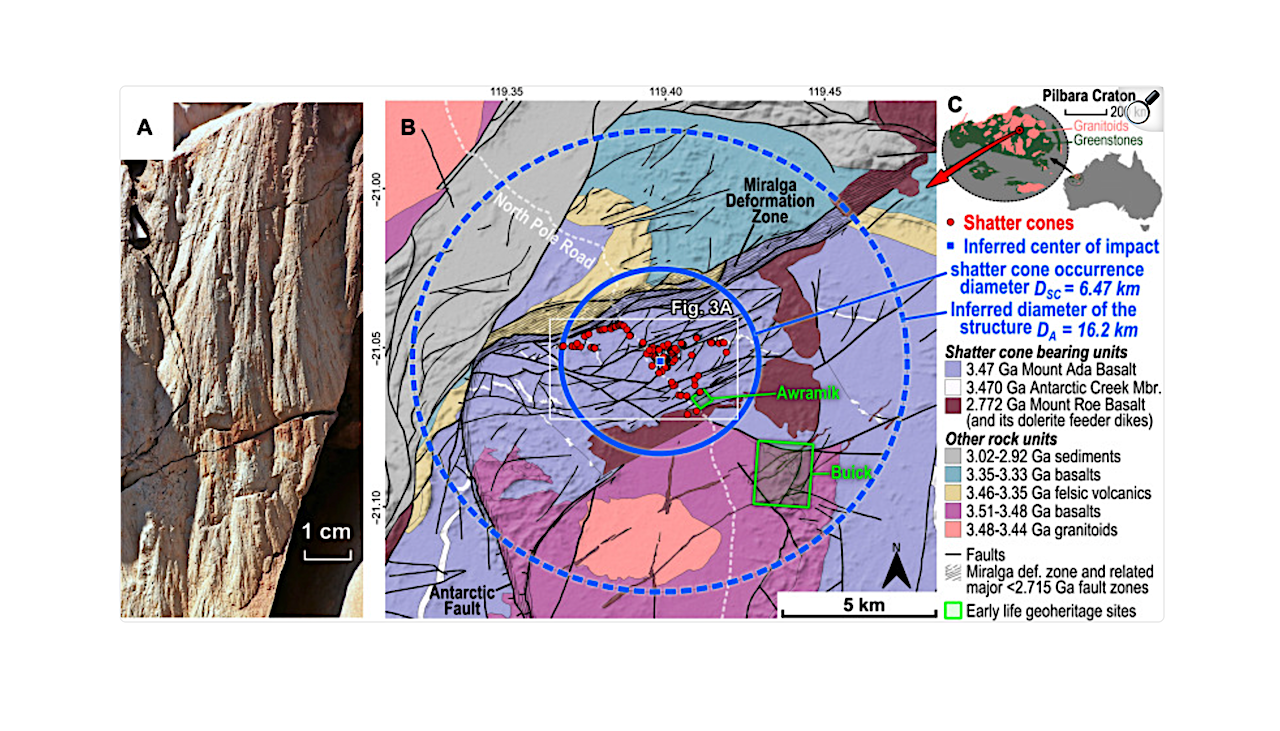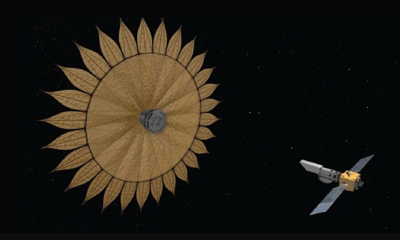Science
Ancient Meteorite Impact Discovered at Miralga Structure in Australia

New findings at the North Pole Dome in the Pilbara Craton of Western Australia reveal a significant geological discovery. Researchers have identified evidence of an ancient meteorite impact, which has implications for understanding early Earth and Mars. The site contains shatter cones within rocks that date back approximately 3.47 billion years, indicating a history of impact events.
Initial reports suggested that the impact created a crater with a diameter of over 100 kilometers and occurred at 3.47 billion years. However, further analysis demonstrates inaccuracies in these age and size estimates. The shatter cones, which are geological features formed under extreme pressure, are spread over an area with a diameter of 6.5 kilometers. They define a larger impact structure, estimated to be 16 kilometers wide.
Researchers have also discovered the first shocked mineral at this site, identified as the high-pressure titanium dioxide polymorph, TiO2-II (srilankite). This finding has led scientists to provisionally name the site the Miralga impact structure. The presence of these shatter cones, which appear in younger overlying rocks, provides clear evidence that the impact event took place after approximately 2.7 billion years.
Geological Significance and Mars Analog Potential
The 3.47 billion-year-old hydrothermally altered basalts found at the Miralga impact structure are now recognized as the oldest known shocked terrestrial rocks. This highlights the site’s potential for providing insights into impact processes on both Earth and Mars. The research emphasizes that the geological features observed could serve as analogs for impacts into biosignature-bearing Archean greenstones, which are crucial for understanding the potential for life on Mars.
Images accompanying the study illustrate the shatter cones in various geological contexts. For instance, one image features shatter cones in weakly propylitic altered massive vesicular basalt from the 2.77 billion-year-old Mount Roe Basalt. Another shows shatter cones located within an intensely chloritized fault zone in the Mount Ada Basalt, which likely dates to less than 2.71 billion years. The occurrence of these features indicates a post-deformation date for the impact event.
Research findings were published in the renowned journal Science Advances, and the study was conducted by a team from Harvard University, among other institutions. These discoveries not only deepen our understanding of the geological history of Earth but also pave the way for future explorations into the geological history of Mars, potentially revealing clues about the planet’s past habitability.
Overall, the Miralga impact structure stands as a testament to the dynamic geological processes that have shaped both Earth and other celestial bodies. The ongoing research at this site promises to enhance our knowledge of planetary impacts and their implications for the evolution of life.
-

 Technology5 months ago
Technology5 months agoDiscover the Top 10 Calorie Counting Apps of 2025
-

 Technology3 weeks ago
Technology3 weeks agoOpenAI to Implement Age Verification for ChatGPT by December 2025
-

 Health3 months ago
Health3 months agoBella Hadid Shares Health Update After Treatment for Lyme Disease
-

 Health4 months ago
Health4 months agoAnalysts Project Stronger Growth for Apple’s iPhone 17 Lineup
-

 Health4 months ago
Health4 months agoErin Bates Shares Recovery Update Following Sepsis Complications
-

 Technology5 months ago
Technology5 months agoDiscover How to Reverse Image Search Using ChatGPT Effortlessly
-

 Technology3 months ago
Technology3 months agoElectric Moto Influencer Surronster Arrested in Tijuana
-

 Technology5 months ago
Technology5 months agoMeta Initiates $60B AI Data Center Expansion, Starting in Ohio
-

 Technology2 months ago
Technology2 months agoDiscover 2025’s Top GPUs for Exceptional 4K Gaming Performance
-

 Technology5 months ago
Technology5 months agoRecovering a Suspended TikTok Account: A Step-by-Step Guide
-

 Health5 months ago
Health5 months agoTested: Rab Firewall Mountain Jacket Survives Harsh Conditions
-

 Lifestyle5 months ago
Lifestyle5 months agoBelton Family Reunites After Daughter Survives Hill Country Floods





















